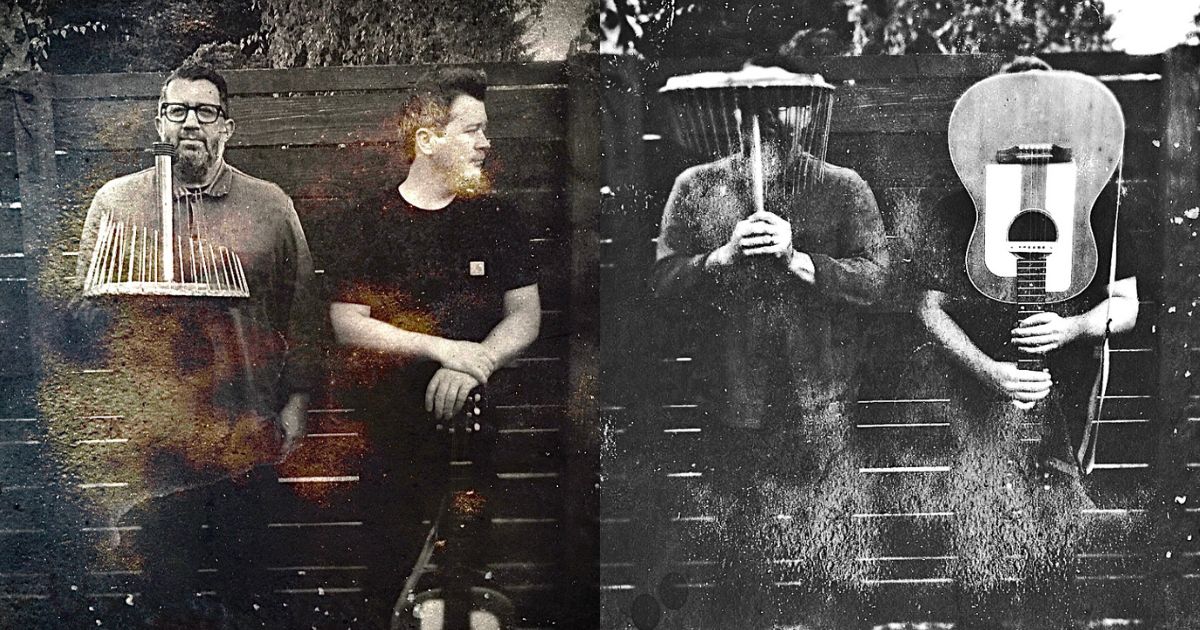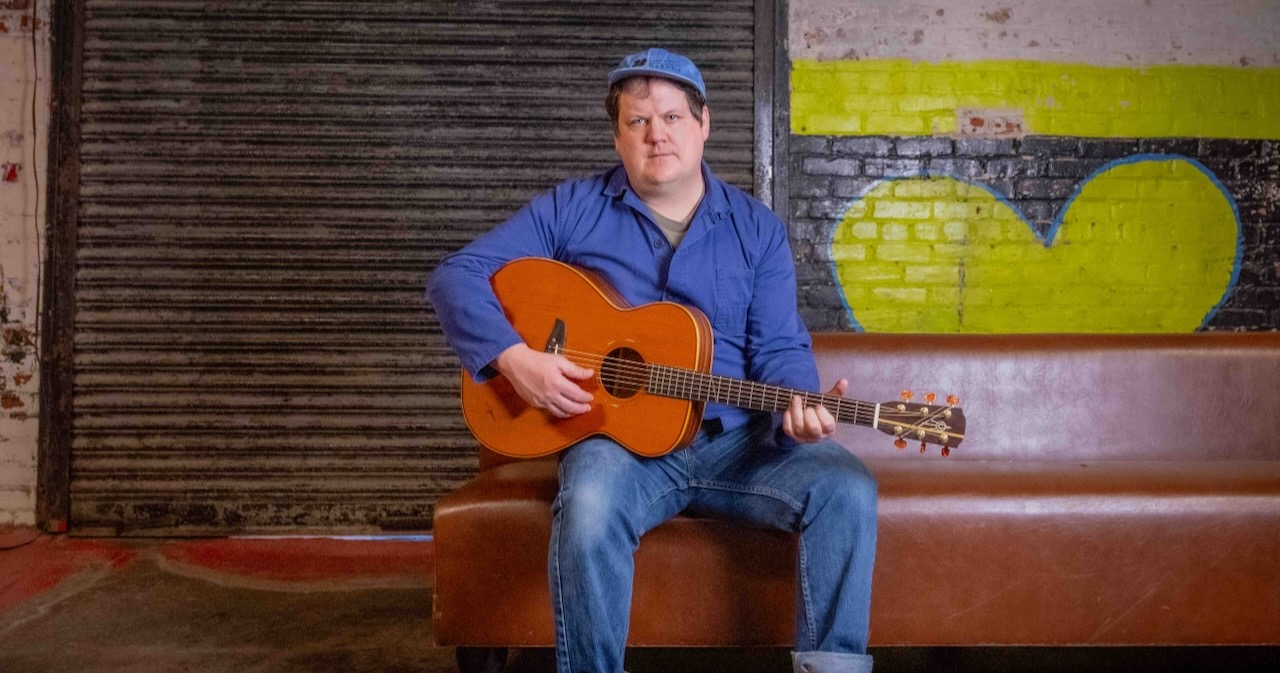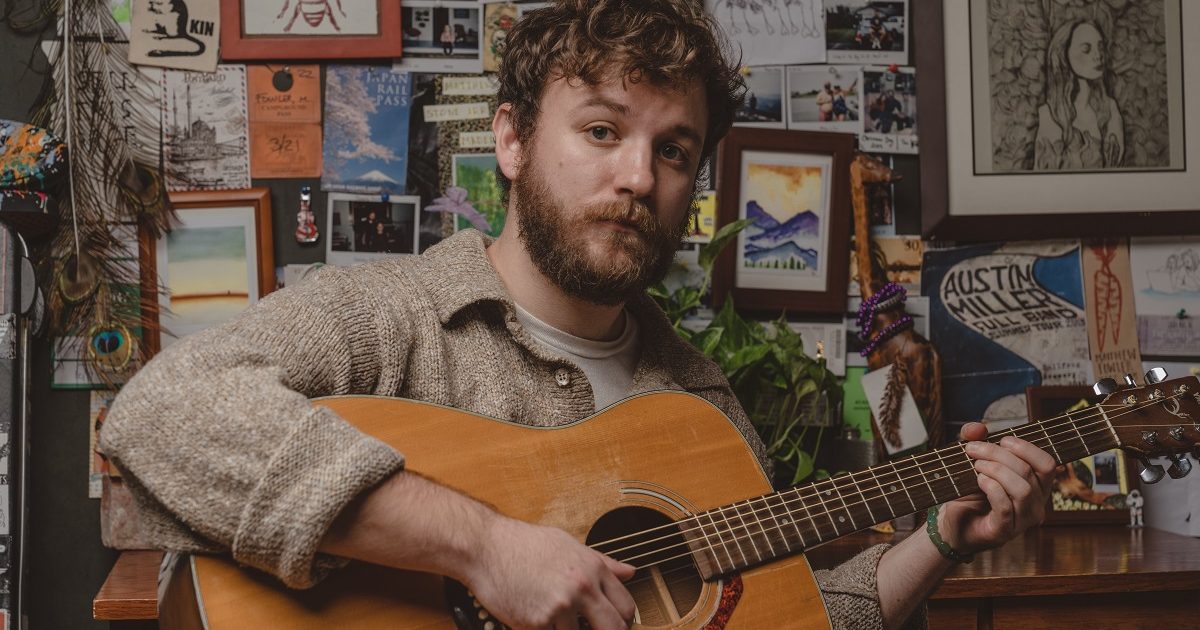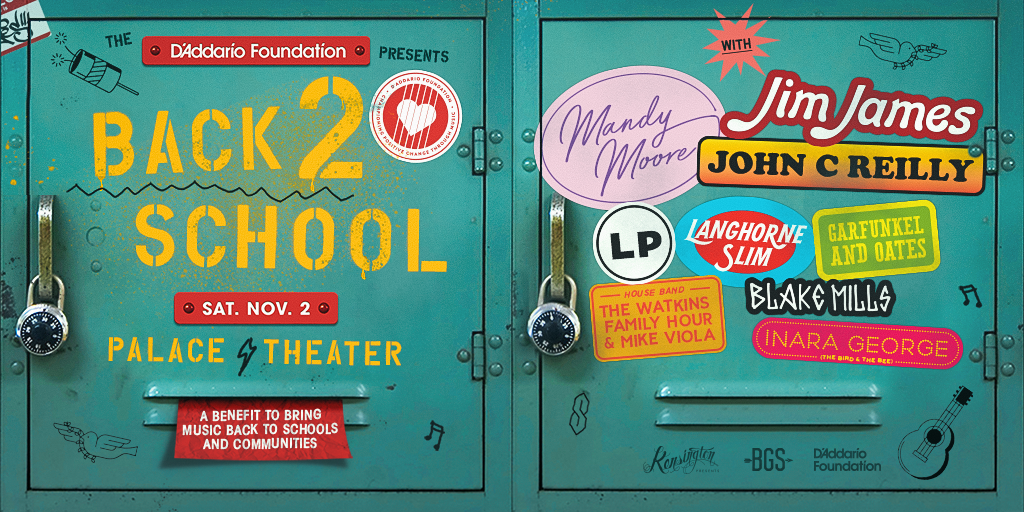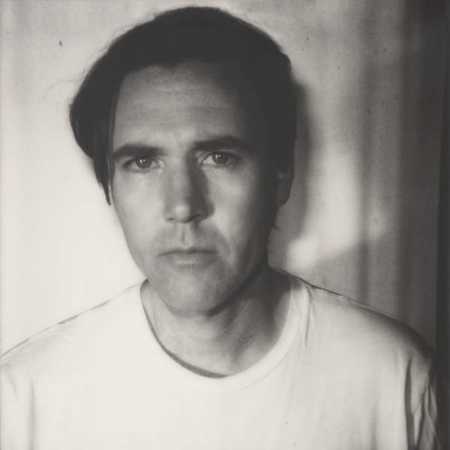Growing up in a musical family, I was exposed to a lot of different sounds from an early age – a lot of them, not by choice. I had a dad who preferred country radio and led gospel music at our church. My mom played classical and Civil War songs on the piano daily while I played with my toys. Next were two older siblings using seniority to lord over the dials at every chance – they also both played classical piano.
As I got older and carved away at my own musical sensibilities, these dictates became accidental influences to the soundtrack of my life and shaped who I have become as a songwriter and musician. This playlist includes some early influences along with music that has turned me on for one reason or another, which I’ll do my best to explain. Thank you to everyone who has helped shape the soundtrack of my life so far, especially my family and mentors. – Nathan Trueb, Another Glory
“Surfer Girl” – The Beach Boys
Some of my earliest memories growing up involve the Beach Boys. I remember the Endless Summer cassette tape and its painted album cover distinctly. We would listen to it on road trips and I remember my dad and his friends playing guitars and singing these songs. My older brother got really into the Beach Boys and I remember he loved this song. Even though he told me he didn’t know why, but it made him sad. It also became my 2-year-old daughter’s favorite song and band.
“Why Not Me” – The Judds
As much as I didn’t want to like country music, it started to become harder to make excuses as to why just as soon as I started to play the guitar and take music more seriously. If you were to ask anyone in my grade school what music they liked, the only acceptable answer was, “Everything BUT country.” The more discerning my ear became I couldn’t deny the masterful playing and even, dare I say, “shredding” of the players on these then-contemporary records. The other thing that country brought to the table were some perfectly crafted, three-minute-and-twenty-nine second pop masterpieces like this one. Although I couldn’t show it outwardly to my family, I was rocking out on the inside.
“Black Cadillac” – Lightnin’ Hopkins
We used to go over to my uncle’s house from time to time when my mom was at work. On one visit, around the time when I had just started playing guitar, I found out my uncle played a left-handed acoustic guitar that I really admired. I also had no idea that he had been learning some blues and showed me a few licks and we jammed together. He had a few records laid out and this one leaped into my hands. He put it on and I couldn’t believe my ears. The voice, the guitar, the storytelling and humor. I did that thing where I didn’t let go of the record until my uncle suggested I take it home. I still play that same copy to this day.
“Going to California” – Led Zeppelin
I owe the most to my brother as a musical influence – I guess just influence in general. He was always there with the next record I needed to hear. It was a pipeline from his friends to him, him to me, and then me to my friends. I’ll never forget the day that he played me Led Zeppelin and it completely blew my mind. Growing up in a conservative household, I had never heard anything like it and everything changed after that. I became obsessed with Led Zeppelin like people get obsessed with Harry Potter or WWII. “Going to California” came to me around the time of first loves and I really got it. “Sell the Farm” off of the Another Glory record is a direct hat-tip to this song. I love the way it made me feel and how it still transports me to long phone calls in my attic room in the summer time.
“Michelle” – The Beatles
My first memorable crush was named Michelle. She was my sister’s friend and would visit our house often. We grew up on a farm and that meant that my brand of flirting was often hurtling cow pies at my sister’s friends. Somehow that first love was unrequited.
I remember a trip to the Puget Sound where my brother loaned me his Beatles 1962-1966 disc (the red one with the whole apple/cut apple on the compact disc), popping it in the Discman, putting the headphones on, and listening to that song over and over. I loved it, but it made me sad. Now I knew how my brother felt when he listened to “Surfer Girl.” I sing this song to my daughter and it’s still amazes me that they wrote it. Like, how? I’m sure there’s a story about it somewhere, but I don’t think I really want to know. My wife and I have been together since high school and the first time I visited her bedroom she had every single Beatles album in a dedicated, spinning CD tower.
“Naptown Blues” – Herb Ellis
My mom was driving me to school one day my freshman year and I had the local jazz radio station on, 89.1 KMHD. I think playing the guitar a lot when I was homeschooled for a couple years took me on a trajectory from Led Zeppelin to Steely Dan to trying to understand jazz by listening to the radio. This song came on as she dropped me off. I said, “I don’t know what this is, but I want to play like that.” Bless her heart, she must have written it down as the DJ read that title after the song ended (in their soft, publicly-funded morning voice), because I unwrapped this CD for my next birthday and I remember listening to it while I went to sleep until I had every part memorized.
“Don’t Think Twice, It’s Alright” – Bob Dylan
Speaking of girlfriends, my first real girlfriend in high school had an older brother who was a Dylan fanatic. I remember looking through his 72-disc Case Logic CD case. I opened up the first page, Dylan. Second page, Dylan. The entire thing was filled with Bob Dylan. He asked me if I was a fan and I remember saying, “not yet.” For some reason I had a feeling I might be someday.
Well, I don’t remember how, but when I moved out of my folks’ place this song hit me like a freight train. Dylan’s influence is so obvious in any modern music, especially when you are a guy fingerpicking a guitar, but we have to give credit where it’s due. I’d like my old girlfriend’s brother to know that I finally crossed the Rubicon.
“My Funny Valentine” – Bill Evans & Jim Hall
I’ve had a few guitar teachers in my life and had the pleasure of taking some lessons in college from Jerry Hahn. He had his own books and I think was a big fan of Jim Hall. He turned me on to this record and this style of walking bass with chords. He also taught me to keep a list of “must-have” or “must-find” records in my wallet for the record store. I still have a list to this day in my notes. He said this one should be on there. Years after taking from him, I found an original copy somewhere in California. This is one of my all-time favorite records.
“Run That Body Down” – Paul Simon
I got pretty into this record at some point and into Paul Simon’s writing in general. I used to have two enormous PA speakers that we used for band practice in my basement. Late at night I would sit between them and listen to music very loud. This song was on and the guitar solo caught me by surprise. I looked up the song to find out who played the solo. It was my old teacher, Jerry Hahn!
I ran into him at a jazz club not too long after and asked him about it. He recalled it perfectly and said he turned down the offer to come to the studio because he was “too busy.” They kept calling, so he went and remembered being frustrated. Take after take, Paul wasn’t getting what he wanted. Finally Jerry took the solo in a totally different direction, against his good sense, with the wah pedal and all. After the take Paul exclaimed, “That’s it!”
“One Mo’Gin” – D’Angelo
After listening to all of the Motown one can get their hands on, you start to wish there was more. Or, that it continued to evolve into modernity with class and style instead of flaming out, morphing into disco dances by designer drugs. Like when your parents started “raising the roof.” At some point you just have to put it down, like Old Yeller. Then decades later someone comes along who has filled themselves to the brim with that old tonic and others that had filled up on the same, and it comes spilling out in biblical proportions in a perfect statement. Voodoo is that album. D’Angelo is that prophet. I have listened to this record so much in my life that it’s hard to state exactly what influence it has had on me. “Fool For You” was a song written a long time ago and it was a direct attempt to do something in that vein.
“I Don’t Know” – Nick Hakim
As you get older it gets harder to get the same high from music that you did when stuff first really freaked you out – or maybe that’s just me. So, when you find that something or someone, it might become an instant obsession. Nick Hakim had that effect on me. I loved everything he was doing; it was so different, sonically, than most of the bedroom pop stuff or neo-soul. It felt like a modern psychedelic Voodoo, but also just heartbreakingly beautiful. His ability to mix his jazz-school-kid sensibilities with gospel and indie-rock set a high bar and still does.
“The Only Thing” – Sufjan Stevens
It seems that everyone has a favorite Sufjan. His prolific list of albums seem limitless in their scope and bending of genres. The only Sufjan for me is Carrie & Lowell. I don’t think there is an album that equals it in creating a soundtrack for sadness, grief, regret, love, life, and death – at least not that I have found. His lyrical imagery seems to be divinely inspired and it’s hard to pick one part of the song, so I’ll quote the first words:
The only thing that keeps me from driving this car
Half-light, jack knife into the canyon at night
Signs and wonders: Perseus aligned with the skull
Slain Medusa, Pegasus alight from us all
“The Magician” – Andy Shauf
This song came on the radio while I was driving in Portland over a bridge with a view of the river and the city behind it. (I often remember an exact time I heard a song with perfect clarity. Maybe everyone does? “Mo Money Mo Problems” I was passing the Chevron on Molalla Ave., Oregon City, circa 2001.)
After the 8-bar intro to this intriguing new single on the local indie radio station, I nearly crashed my car. I instantly remember being like, “OKAY!” and banging my head when the beat dropped. It’s a perfect song to me and a perfect recording that is perfectly produced. You can’t say that about every song you love.
“If I’m Unworthy” – Blake Mills
Every guitarist sooner or later was exposed to Blake Mills. A friend of mine turned me onto his first album early, before all the hype, and I quickly became a fan. His songs and voice weren’t typical and were totally unique to him. I had watched a lot of videos of him playing and he quickly became the best living guitarist that I was aware of.
His long-awaited sophomore album was finally announced. When he came to town to support the record he was booked in a small room, seated. His name was so unknown I couldn’t find anybody to go with me. I also had inside knowledge that his then girlfriend, Fiona Apple, was likely to make an appearance. So I stood silently in line to the sold-out night and kept my mouth shut.
During his set, I popped out to the bar to get a drink and bellied up to the bar. I let the woman to my left go ahead of me. It was Fiona Apple. She laughed when I nearly spit out my drink. “If I’m Unworthy,” in the moment it was released, became the new “guitar song” for guitar nerds. Every single guitarist has to learn it, as a rite of passage; like Stevie Ray Vaughan or “Sweet Home Alabama.” The song is a snapshot of the Blake Mills that revolutionized guitar once again and then quickly retired, confounding dad-rockers with little tube amps and glass slides adorned to their fingers. Will the real Blake Mills please stand up?
“Body” – Julia Jacklin
MLK & N Fremont, near the Chevron. That’s where I first heard this song. Maybe I only have autobiographical, photographic memories of songs if they involve a gas station, specifically Chevron. We were riding in a friend’s Subaru, which we always drove around in. A peace-sign necklace swinging from her rearview mirror, rain hitting the windshield, the music always blasting. I had never heard the song before and I was all-in from the downbeat. Such a heavy song and so personal.
Julia’s lyrics make you feel like it was you yourself on that Sydney tarmac. And the haunting question, “Do you still have that photograph?/ Would you use it to hurt me?” Like the photograph, the song is naked and circles around a singular progression, building tension until finally quietly cracking open for some light at the end.
“I guess it’s just my life, and it’s just my body…” which, on the first listen, could sound sarcastic, but on the repeat she sounds relieved or at least vindicated. And of course it is probably both. The progression gives hope that this chapter of her life, or ours, is closed. In my experience, that is what a lot of good songs do: close a chapter for the artist and the listener.
“Are You Looking Up” – Mk.Gee
Not a secret any more. Still mysterious, but not just the guitar-guy in the Dijon video. Still shy, but now he’s in the spotlight. The leap from his 2018 album to Two Star & the Dream Police might as well have been a tightrope walk over the Grand Canyon. I loved the old stuff, but when I saw the live video of “Are You Looking Up” with Mk.gee hanging out of a tour bus or train car – whatever it was – I nearly fell out of my chair. I had a hard time explaining why to some who just heard Doogie Howser synths.
His way of playing might not sound outwardly complex or groundbreaking, but in my opinion, it is. Everything about the homespun, demo-quality recordings reminds of me of how a Wu-Tang record sounds completely superior to anything else on MTV at the time, not due to its polish, but rather its grit. Mike’s voice has the perfect dichotomy of rasp and softness. He has a unique ability to sing almost indecipherable lyrics over such memorable melodies that the words could be an afterthought, not unlike Bon Iver.
I had the pleasure of meeting Mike when he came through Portland. He is shy and a lot of lyricists seem to guard their lyrics due to insecurity, but the lyrics are so good, too. I see Mk.gee as the new guitar gunslinger with his outlaw jacket as his cape. He’s single-handedly doing for guitar what The Mandalorian did for Star Wars.
Photo Credit: Ryder Medeles
